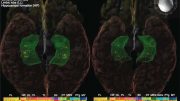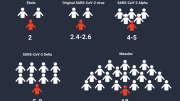
Researchers find that genetics combined with long years of schooling can lead to nearsightedness in children.
Increased schooling is linked to a higher risk of nearsightedness in presence of five genetic variants, according to a new study.
A new study published by a team led by Jeremy Guggenheim of Cardiff University in the journal PLOS Genetics has uncovered five genetic variants that significantly raise a person’s risk of developing nearsightedness as they spend more time in school.
Nearsightedness is a common eye disorder that can lead to irreversible vision impairment in older individuals and often develops in childhood. The condition is believed to be caused by a combination of genetics, limited time spent outdoors, and prolonged years of education.
Genetic studies have identified more than 450 genetic variants associated with an increased risk of nearsightedness, but few have been shown to increase risk specifically in people with the associated lifestyle factors. In the new study, researchers used genetic and health data from more than 340,000 participants with European ancestry. They performed a genome-wide study to identify genetic variants that make people more susceptible to becoming nearsighted in combination with intensive schooling.
The study yielded five genetic variants that progressively increased the risk of becoming nearsighted for individuals, the more time they spent in school – especially for people who had attained education at the university level. Three of these variants were previously unknown, while two were found in studies of East Asian cohorts, where about 80% of children become nearsighted. For comparison, about 30% of children develop nearsightedness in the West. The researchers said that these findings provide new insights into the biological pathways that cause nearsightedness, but more research is needed to understand how those pathways interact with lifestyle factors to cause the condition.
Guggenheim adds, “As well as requiring the need for glasses or contact lenses, myopia is a leading cause of uncorrectable visual impairment. Building on our previous research linking education and myopia, the new study identifies 5 genes associated with myopia development whose effects are amplified by additional years spent in education.”
Reference: “Education interacts with genetic variants near GJD2, RBFOX1, LAMA2, KCNQ5 and LRRC4C to confer susceptibility to myopia” by Rosie Clark, Alfred Pozarickij, Pirro G. Hysi, Kyoko Ohno-Matsui, Cathy Williams, Jeremy A. Guggenheim and the UK Biobank Eye and Vision Consortium, 17 November 2022, PLOS Genetics.
DOI: 10.1371/journal.pgen.1010478
The study was funded by the Welsh Government and Fight for Sight, Cardiff University, and the NIHR.









Be the first to comment on "Education and Genetics: A Dangerous Combination That Can Cause Nearsightedness"